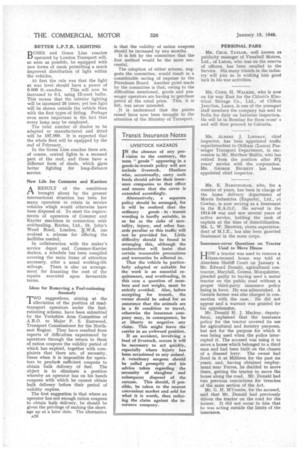Transit Insurance Notes
Page 22

If you've noticed an error in this article please click here to report it so we can fix it.
LIVESTOCK HAZARDS IN the absence of any pro1 vision to the contrary, the term ' goods" appearing in a goods-in-transit policy will not include livestock. Hauliers who, occasionally, carry such loads should advise their insurance companies to that effect and ensure that the cover is extended accordingly.
Alternatively, a separate policy should be arranged, for it will be realized that the ordinary goods in transit wording is hardly suitable, in so far as the risks of mortality, injury, and other hazards peculiar to this traffic will not be provided for Little difficulty should be found in arranging this, although the underwriter will insist that certain reasonable precautions and warranties be adhered to.
That the vehicle be particularly adapted or suitable for the work is an essential requirement, and overloading, in this case a question of nuns. hers and not weight, must be strictly avoided. Also, before accepting for transit, the -owner should be asked for an assurance that the animals are in a fit condition to travel, otherwise the insurance company may, in consequence, be at liberty to negative any claim. This might leave the carrier in an awkward position.
If an accident, involving a load of livestock, occurs it will be necessary to act quickly, especially where injury has been occasioned to any animal. A veterinary surgeon should be called promptly and his advice taken regarding the necessity of slaughter and subsequent disposal of the carcase. This should, if possible, be taken to the nearest convenient market and sold for what it is worth, thus reducing the claim against the insurance company.




























































